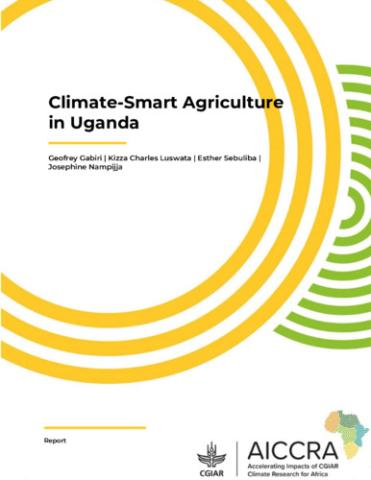Abstract
Population growth, rapid urbanization, and dietary changes are placing tremendous pressure on food systems, particularly in developing countries. Based on current income, population and consumption trends, the Food and Agriculture Organization of the United Nations (FAO) estimates that, by 2050, some 50 percent more food will be needed to satisfy the extra demand compared to 2013 (Alexandratos and Bruinsma, 2012). The challenges posed by rapid growth in food demand are intensified by the effects of climate change on agricultural systems, including crops, livestock, forestry and fisheries. Climate change effects will vary by region, country and location and will affect people differently depending on their vulnerability and capacity to adapt. Some areas are expected to become drier and more droughtprone, while others will witness more intense rains or altered rainfall patterns as well as mean temperature changes. In Uganda, climate projections based on the Global Climate Models (GCMs) used in the Fifth Assessment Report (AR5) of the Intergovernmental Panel on Climate Change (IPCC) indicate the possibility of an increase
in the country’s near-surface temperature in the order of +2°C in the next 50 years, and +2.5°C in the next 80 years using Representative Concentration Pathway (RCP) 4.5 scenarios (Zinyengere et al., 2016). They also predict a slight decrease in total annual rainfall in most of the country, with slightly wetter conditions over the west and north-west under both RCP 4.5 and RCP 8.5 scenarios. These events threaten food production and the livelihoods of food producers, particularly those with the weakest adaptation capacity who are too often located in areas exposed to the most severe changes. Moreover, for agricultural systems
to sustainably contend with climate change, their contribution to greenhouse gas (GHG) emissions must also be addressed. Therefore, this added variability changes the conditions in which agriculture is practiced and requires context and site-specific strategies and responses.

